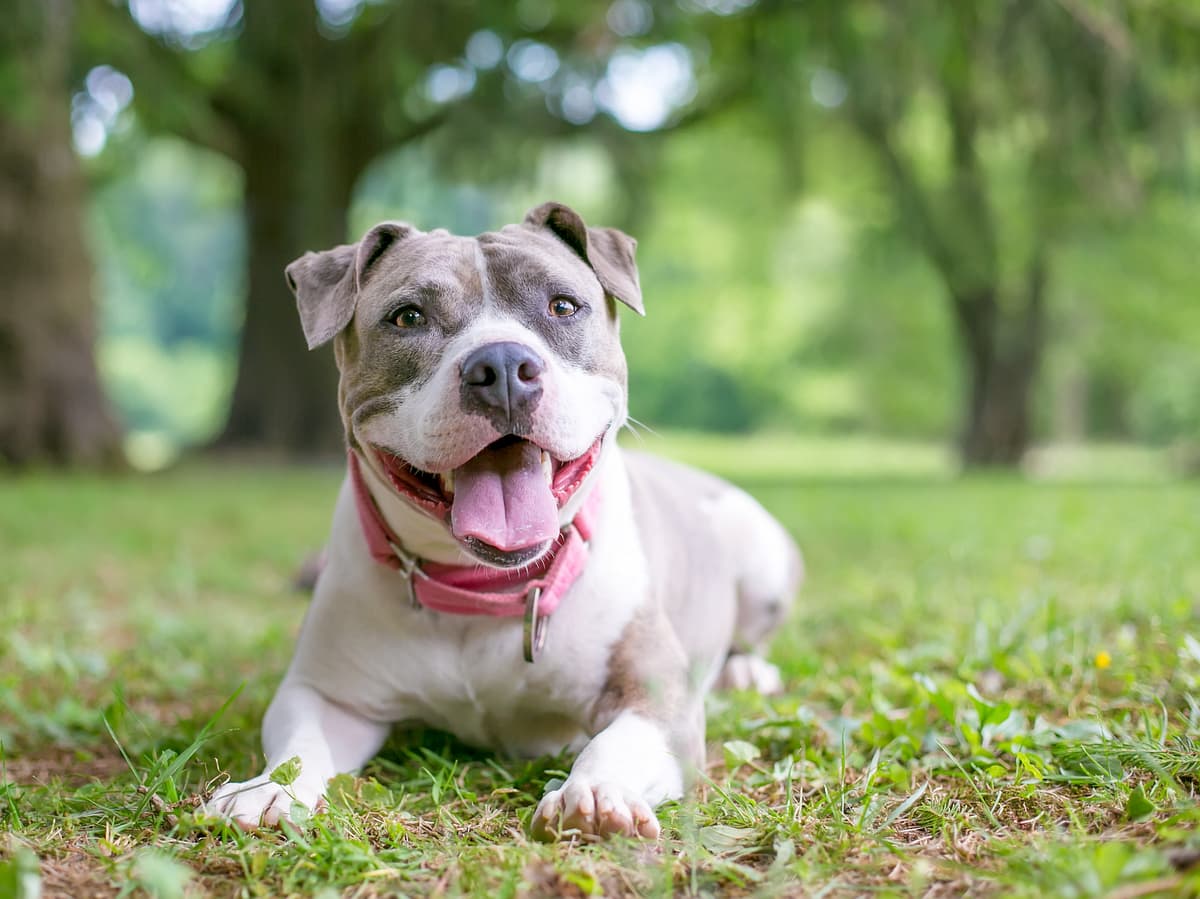Staffordshire Bull Terrier vs English Bulldog
Discover the differences between Staffordshire Bull Terrier and English Bulldog to make the best choice for your situation.
Try different breeds

Staffordshire Bull Terrier
Loyal, courageous, and affectionate, this compact breed thrives as a devoted companion. Known for their playful spirit and strong bond with families of all ages.

English Bulldog
Stocky, courageous, and affectionate, this breed charms with its wrinkled face and calm nature. Loyal and gentle, it thrives as a loving family companion.
Quick comparison
Medium
13–17 kg
Short, smooth
12–14 years
11–15.4 kg
High energy
Medium
23–25 kg
Short, smooth
8–10 years
18–23 kg
Low activity needs
Personality & behavior
Compare the personality traits and behavioral characteristics of both breeds.
Staffordshire Bull Terrier
Affectionate with people, sociable, enjoys attention
Learns commands quickly, responsive to training
Very energetic, needs regular exercise and activity
Loves games and interactive play sessions
Adjusts well to new environments and changes
English Bulldog
Affectionate and gentle with family and children
Learns basic commands with some patience
Prefers lounging over vigorous physical activity
Enjoys play but tires fairly quickly
Adjusts well to most living environments
Care needs
Exercise, grooming, and daily care requirements
Staffordshire Bull Terrier
Hip dysplasia, cataracts
English Bulldog
Brachycephalic syndrome, skin fold infections
Suitability
How well each breed fits different living situations and families
Staffordshire Bull Terrier
Good option
Eager to please and trainable, but requires consistent leadership from inexperienced owners.
Apartment friendly
Compact size suits apartments, but needs daily exercise and mental stimulation.
Excellent fit
Thrives with active families who enjoy regular walks, play, and outdoor activities.
Very suitable
Generally gentle and affectionate, but supervision is important with young children.
Caution advised
May show intolerance toward other pets without careful socialization and supervision.
Not recommended
Can become bored and destructive if left alone for extended periods of time.
English Bulldog
Good option
Easygoing, low-maintenance nature suits owners with limited dog experience
Excellent fit
Moderate exercise needs and calm demeanor work well in small living spaces
Not ideal
Low stamina and breathing issues make them unsuited for high-activity lifestyles
Very suitable
Gentle, patient, and tolerant with young children when properly socialized
Usually compatible
Generally sociable but may need guidance with other pets, especially dogs
Not recommended
They struggle with long periods alone and are prone to separation anxiety
Breed strengths
What each breed excels at and their best qualities
Staffordshire Bull Terrier
- Loyal to family members
- Affectionate with children
- High intelligence and trainability
- Robust and muscular build
- Minimal grooming requirements
English Bulldog
- Affectionate with family members
- Generally good with children
- Low exercise requirements
- Minimal grooming needs
- Adaptable to apartment living
Challenges & considerations
Potential challenges and considerations for each breed
Staffordshire Bull Terrier
- Prone to separation anxiety
- Can be reactive toward other dogs
- Needs substantial daily exercise
- Strong prey drive may surface
- May be stubborn during training
English Bulldog
- Prone to respiratory problems
- High risk of overheating
- Susceptible to skin infections
- Can be stubborn during training
- Tends to drool frequently
Ready to choose your perfect breed?
Learn more about each breed or compare other breeds to find the perfect match for your lifestyle.
Discover more helpful tools
Make use of our other free tools to get the most out of your pet experience
